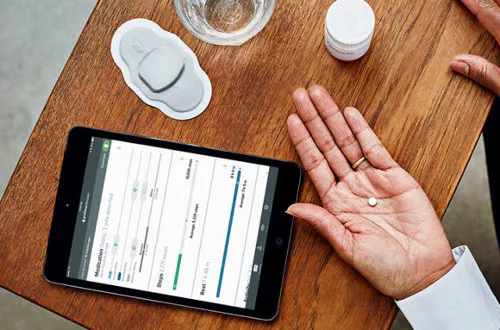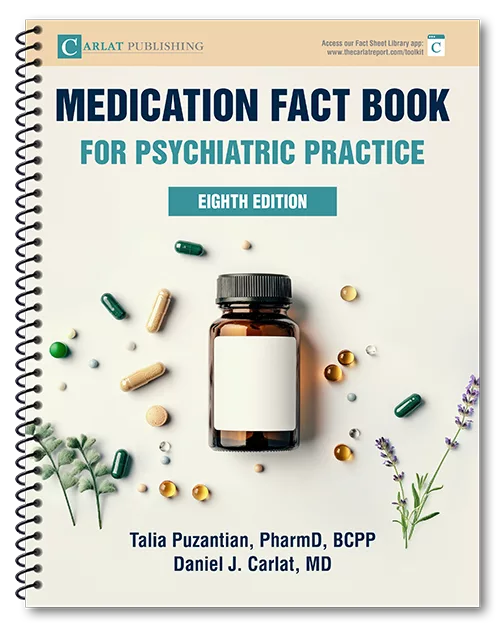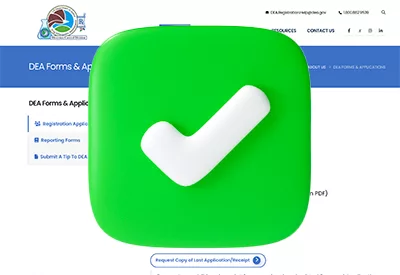Drug Interactions That Matter

C. Jason Mallo, DO. Division Medical Director, MMC Department of Psychiatry, Adult Outpatient Psychiatry; Assistant Clinical Professor, Tufts University School of Medicine.
Dr. Mallo has no financial relationships with companies related to this material.
With polypharmacy on the rise, electronic medical records have become essential for prescribing safely. But with so many interaction alerts popping up, it’s easy to become desensitized. What we really need is a way to filter out the noise and focus on the interactions that truly matter. In that spirit, this article highlights drug interactions that should be on your radar.
Sedative-hypnotics
A major risk with benzos is the added effects of respiratory depressants, opioids in particular. The synergistic risk of fatal overdoses has led the FDA to recommend using benzos only as a last resort for patients on opioids.
| How to Minimize Overdose Risk With Benzos and Opioids |
Avoid the combination if a patient is ≥65 years, has significant respiratory or systemic medical illness, has a history of substance misuse or accidental overdose, or is taking ≥50 morphine milligram equivalents per day (see www.northwestpainguidance.org/opioidmedcalculator) |
Limit doses and prefer a benzo with a lower risk of overdose/reinforcing effects (eg, oxazepam) |
Coordinate care with the opioid prescriber |
Involve the patient’s family in risk assessment and education |
Schedule more frequent visits |
Utilize your state’s controlled substance database, controlled substance agreements, and urine drug screens |
Prescribe an opioid-blocking rescue agent (eg, naloxone nasal spray 4 mg, also available OTC) |
_________________________________________________________
Most benzos are metabolized by CYP3A4 and CYP2C19. Inhibition of these enzymes produces elevated concentrations, for instance with fluvoxamine, fluoxetine, and grapefruit juice. Citalopram, escitalopram, and sertraline have less of an impact here. Lorazepam, oxazepam, and temazepam are also useful if you’re looking to avoid CYP450 interactions, as they undergo phase II metabolism with UGT.
There is less known about the Z-drugs, which are primarily metabolized by CYP3A4, but reports of drug interactions exist. It seems prudent to apply similar precautions to them as with benzos.
Mood stabilizers
Lithium
Lithium toxicity is a risk with anything that limits lithium’s renal clearance. Offenders include thiazide diuretics (eg, HCTZ), angiotensin-converting enzyme inhibitors (eg, “-prils”: benazepril, enalapril, lisinopril), angiotensin II antagonists (eg, “-sartans”: losartan, valsartan), and non-steroidal anti-inflammatory drugs (NSAIDs). When these medications are co-prescribed, cut the lithium dose in half and recheck a level in one week. Aspirin and acetaminophen are alternative options for pain that don’t require lower lithium dosing, and the NSAID sulindac has a very low risk of causing this interaction.
Carbamazepine
Carbamazepine is a potent inducer at multiple enzymes, notorious for dropping levels of drugs metabolized by CYP3A4, 1A2, 2C9, 2C19, 2A6, and 2B6. This could be a serious problem with contraceptives, warfarin, and immunosuppressants. Carbamazepine lowers levels of most psychotropics (see the table below), including itself through auto-induction. Conversely, it does not affect the new antipsychotic xanomeline/trospium.
Valproate
Valproate inhibits UGT phase II glucuronidation and doubles lamotrigine levels, risking Stevens-Johnson syndrome when lamotrigine’s titration schedule is not adjusted. Similarly, valproate raises lorazepam levels, increasing the risk of central nervous system depression.
Antidepressants
Monoamine oxidase inhibitors (MAOIs)
MAOIs have two serious interactions: serotonin syndrome and hypertensive crisis. When combined with tyramine-rich foods, MAOIs can cause a dangerous rise in blood pressure. Patients must avoid aged meats and cheeses, fermented products, and craft beer and wine. Only one MAOI is free of this interaction—the selegiline patch—and only in the 6 mg dose (Wimbiscus M et al, Cleve Clin J Med 2010;77(12):859–882).
With most medications, serotonin syndrome is a rare interaction, but with MAOIs it is more common and more severe (including selegiline). Heed the warnings of drug interaction software on this one, although some drugs that often trigger a serotonin syndrome warning can be used with caution (eg, carbamazepine, triptans, and antidepressants without serotonergic effects like bupropion, trazodone, mirtazapine, desipramine, trimipramine, and doxepin).
Hypotension may occur when MAOIs are co-prescribed with antihypertensive agents, resulting in falls, ischemia, and confusional states. This is because MAOIs can paradoxically reduce sympathetic flow.
Before starting an MAOI, wait for offending agents to be cleared. Five half-lives will do, which is one to two weeks for most antidepressants, two to three weeks for vortioxetine, and four to five weeks for fluoxetine.
Tricyclic antidepressants (TCAs)
With TCAs, the antidepressant benefits are dose dependent, but higher doses are often accompanied by side effects, and very high levels can be fatal. TCAs block alpha-adrenergic, histaminergic, and muscarinic receptors, and can cause cardiotoxicity by blocking sodium channels. Interactions are usually caused by meds that decrease their metabolism by CYP2D6 and other enzymes, for instance duloxetine, bupropion, and the non-“pram” SSRIs (fluoxetine, fluvoxamine, paroxetine, and sertraline ≥150 mg). TCAs can be combined with these inhibitors by adjusting the TCA dose (cutting it in half) and monitoring serum levels.
Trazodone
Trazodone is a 5-HT2A receptor antagonist. Because it doesn’t substantially increase intrasynaptic serotonin levels, the risk of serotonin syndrome is relatively low (Foong A et al, Can Fam Physician 2018;64(10):720–727). However, prolonged sedation could result when trazodone, a CYP3A4 substrate, is given with an inhibitor. Caution is warranted with CYP2D6 inhibition too. Meta-chlorophenylpiperazine (mCPP), a metabolite of trazodone metabolized by CYP2D6, causes dysphoria, anxiety, and hallucinations at higher levels (see TCPR Nov/Dec 2018).
Trazodone is associated with QT prolongation, raising the risk of torsades de pointes when its levels are raised by CYP3A4 inhibition. Consider ordering an ECG for patients who are co-prescribed ziprasidone or methadone, are ≥65 years old, or have preexisting cardiovascular disease, electrolyte abnormalities, or hepatic or renal failure.
Antipsychotics
Smoking lowers some antipsychotic levels by inducing CYP1A2. The interaction is caused by aromoatic hydrocarbons and applies to patients who smoke nicotine or cannabis at least every two to three days. Levels of clozapine and olanzapine, both CYP1A2 substrates, can vary widely depending on the patient’s smoking status. If your patient is planning to quit smoking, you should consider dose decreases with change in smoking status.
Potent CYP1A2 inhibitors like fluvoxamine can increase clozapine’s level along with its seizure and orthostatic potential.
Management tips
- Don’t forget to include drug interactions as part of your differential, especially when patients complain of symptoms after a medication change.
- Be on the lookout for interactions in patients who may be more susceptible (eg, elderly patients, those with liver or kidney disease, or polypharmacy cases).
- When starting your patient on a potent enzyme inhibitor, consider halving the dose of the affected drug, because inhibitors compete with substrates and effects can be immediate.
- On the other hand, when starting a potent inducer, you can wait about one week before increasing the dose of an affected drug, as inducers take time to rev up extra enzymes.
- Genetic tests tell us whether someone is a poor, intermediate, or ultra-rapid metabolizer. But there is variation in how that information corresponds to clinical outcomes, and the cost of testing is another consideration. Many other factors affect drug interactions and response, and I don’t recommend testing.
CARLAT TAKE
Many drug interactions don’t have significant consequences. Still, about 10%–20% of patients develop problems from them. Vigilance is needed to avoid adverse outcomes, especially for meds with narrow therapeutic windows. We need better software to help us sort this out, as it is impossible to remember every interaction.
Newsletters
Please see our Terms and Conditions, Privacy Policy, Subscription Agreement, Use of Cookies, and Hardware/Software Requirements to view our website.
© 2025 Carlat Publishing, LLC and Affiliates, All Rights Reserved.




_-The-Breakthrough-Antipsychotic-That-Could-Change-Everything.webp?t=1729528747)



